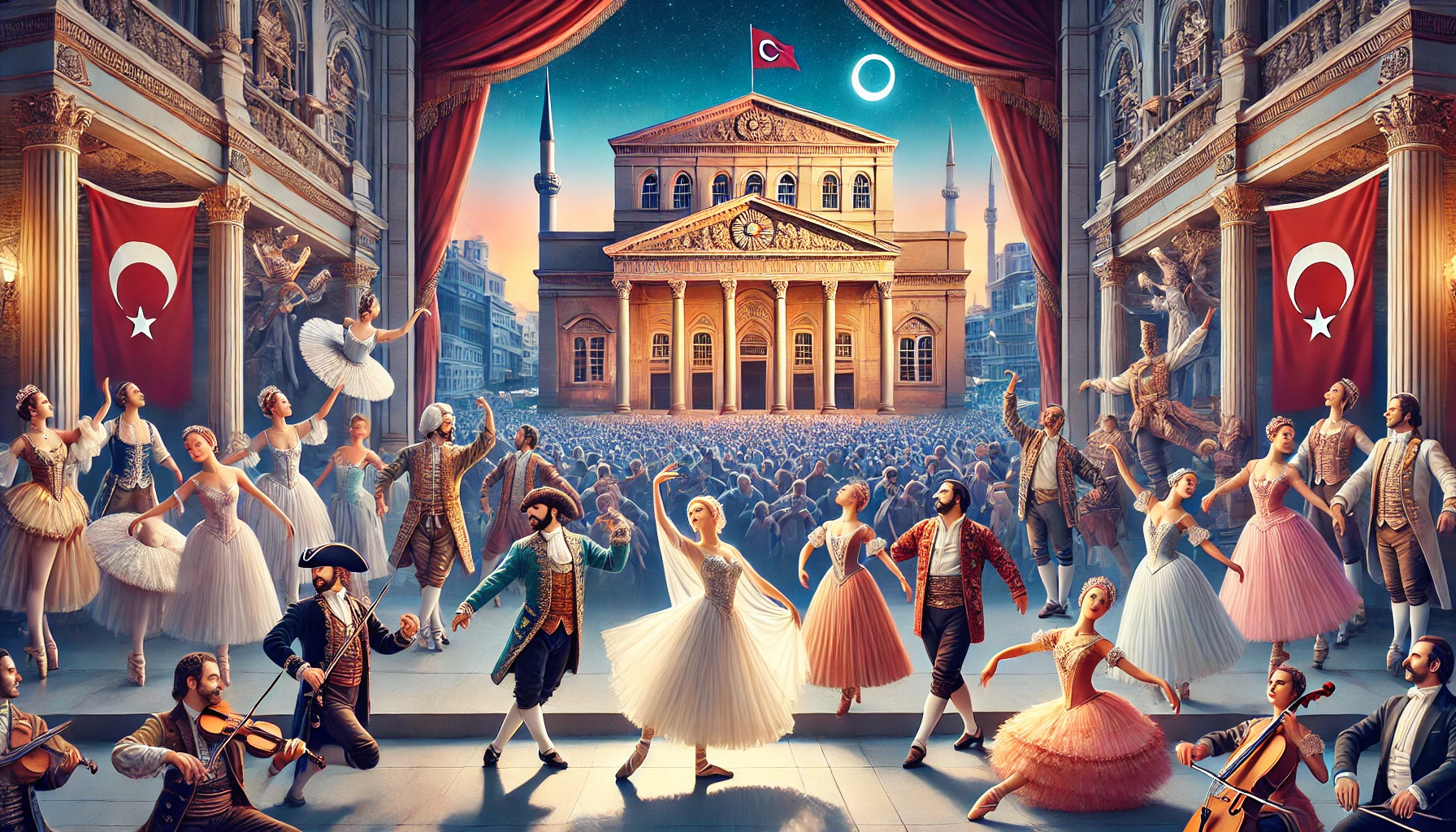The Flourishing of Opera and Ballet in Turkey
Opera and ballet have thrived in Turkey, particularly during the establishment of the Turkish Republic. These art forms, which began to take root during the Ottoman period, have since blossomed into significant cultural expressions. Today, Turkey is renowned for its successful performing artists and vibrant opera and ballet scene.
Historical Roots: The Ottoman Period
Early Performances
The first opera and ballet performances in Turkey date back to the Ottoman period. These early productions were influenced by European art forms, which were gradually introduced to the Ottoman Empire through diplomatic and cultural exchanges. Sultan Abdülmecid I, a patron of the arts, played a crucial role in bringing Western opera and ballet to the Ottoman court. He commissioned the construction of the Dolmabahçe Palace, which included a theater for hosting these performances.
Influence of Western Arts
European artists and performers were invited to the Ottoman Empire, where they introduced new styles and techniques. The fusion of Ottoman and European artistic traditions laid the groundwork for the development of a unique Turkish opera and ballet scene.
The Establishment of the Turkish Republic
A New Cultural Era
With the establishment of the Turkish Republic in 1923, there was a renewed emphasis on modernizing and promoting the arts. Mustafa Kemal Atatürk, the founder of the Republic, was a strong advocate for cultural development and saw the arts as a means to foster national identity and progress.
Institutional Support
Under Atatürk’s leadership, significant efforts were made to institutionalize and promote opera and ballet. The Ankara State Conservatory was established in 1936, providing formal education and training for aspiring musicians, dancers, and performers. This institution became the cornerstone for nurturing talent and developing a professional performing arts scene in Turkey.
First Turkish Operas and Ballets
The first Turkish operas and ballets were composed and performed during this period. Renowned composers such as Ahmet Adnan Saygun and Necil Kazım Akses created works that blended traditional Turkish themes with Western operatic and balletic forms. The establishment of state opera and ballet companies further solidified the presence of these art forms in Turkish culture.
Modern-Day Success
Renowned Performers
Today, Turkey boasts a wealth of talented opera singers, ballet dancers, and choreographers who have gained international acclaim. Turkish performers regularly grace the stages of prestigious opera houses and ballet companies around the world. Artists like soprano Leyla Gencer and ballet dancer Tan Sağtürk have made significant contributions to their respective fields, earning recognition and admiration globally.
Festivals and Performances
Turkey hosts numerous opera and ballet festivals that attract audiences from around the world. The Istanbul Opera Festival, the Aspendos International Opera and Ballet Festival, and the Ankara International Music Festival are just a few examples of events that celebrate these art forms. These festivals showcase both classical and contemporary works, highlighting the diversity and creativity of Turkish performing artists.
Cultural Hubs
Cities like Istanbul, Ankara, and Izmir have become cultural hubs for opera and ballet. State opera and ballet companies, as well as private institutions, regularly stage performances that draw large audiences. Venues such as the Istanbul State Opera and Ballet, the Ankara Opera House, and the Izmir State Opera and Ballet are central to the thriving performing arts scene in Turkey.
Conclusion
Opera and ballet have deep roots in Turkish culture, having evolved from early Ottoman influences to flourishing during the establishment of the Turkish Republic. Today, these art forms continue to thrive, supported by talented artists, dedicated institutions, and enthusiastic audiences. Turkey’s rich tradition of opera and ballet is a testament to the nation’s commitment to cultural excellence and artistic innovation.
Latest Update: May 22, 2015
Your Content Goes Here
A brief summary of the key points in this article.




